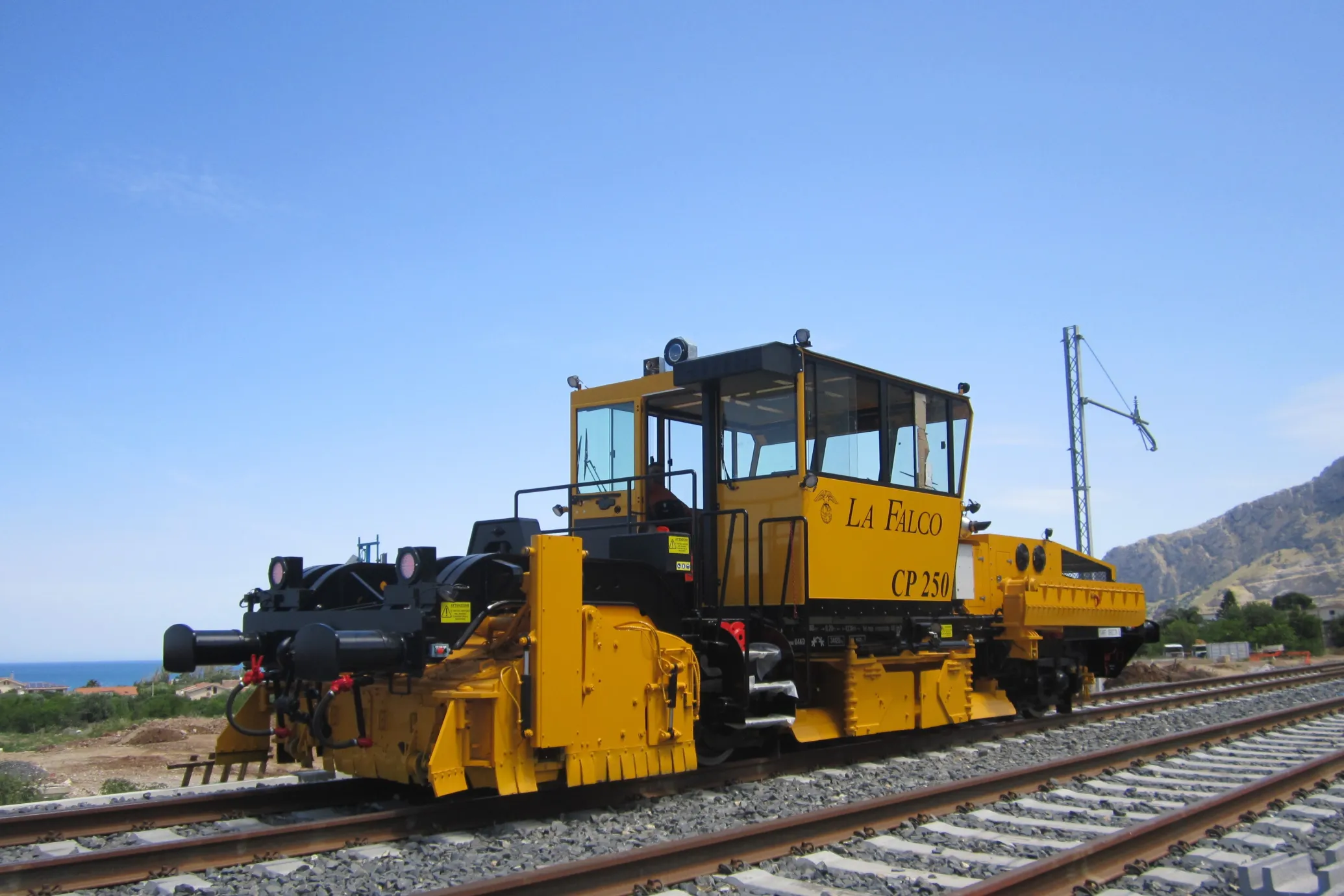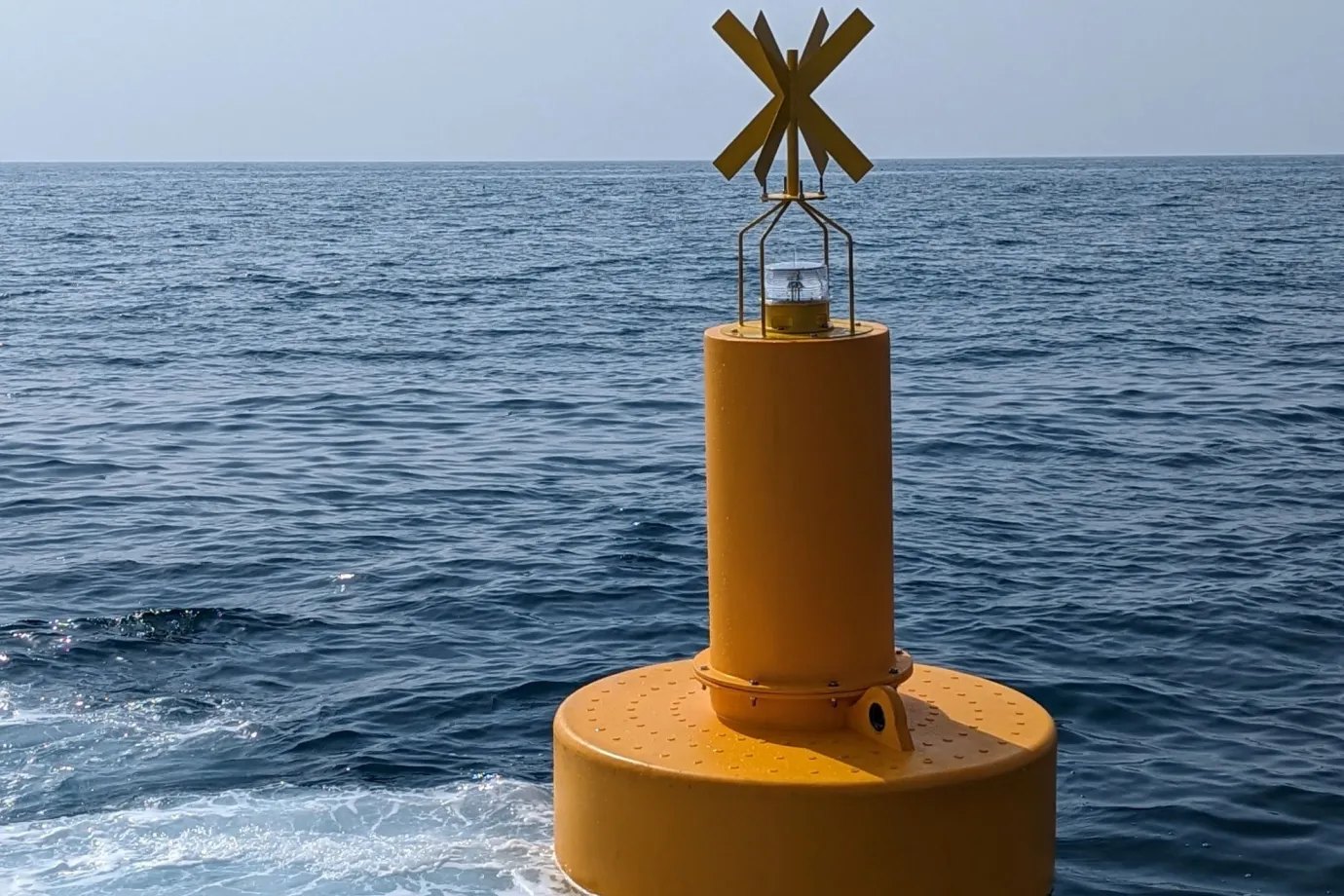A ballast regulator is a maintenance machine used to distribute, shape, and clean the ballast that supports railroad ties and ensures optimal track alignment. Considering the critical role of this machine, choosing the right ballast regulator that meets the project’s needs has always been a big challenge in this field. In this detailed ballast regulator comparison, we put La Falco’s ballast regulators side by side with two major competitors, Kershaw (Progress Rail) and Plasser & Theurer, offering a guide toward selecting the best fit for railway projects.
Looking for a high-performance Machine?
Explore our “ballast regulator“, engineered for precision shaping, durability, and ease of maintenance in any rail environment.

Side-by-Side Ballast Regulator Comparison: Top 4 Key Features

Before diving into the detailed comparison, it’s important to acknowledge that each of La Falco, Plasser, and Kershaw ballast regulators brings unique strengths and design philosophies to address the client’s needs, since they are all considered to be the most reliable and popular manufacturers worldwide. By examining them through key technical and operational features, we aim to provide a balanced view of the capabilities and limitations of La Falco’s CP250 and CP500, Plasser’s PBR 400 and PBR 400 R, and Kershaw’s KBR860 and KBR925. Here are the 4 key features that differentiate these machines from each other:
Ballast Handling Efficiency (Plow, Wings, and Broom)

The core function of a ballast regulator is to distribute and shape ballast using plows and to sweep excess ballast off the ties with a broom. The design of these components greatly affects how efficiently the machine can profile the ballast in the desired one-pass operation. Both CP models come with a front plow (also called a ballast-crown plow) that is capable of gathering ballast from the center and distributing it towards the shoulders in one go. Additionally, they have adjustable side wings (shoulder plows) to collect or spread ballast on the shoulders. The combination essentially covers the entire cross-section of the track ballast in one movement.
PBR 400 R has a front plow and side ploughs but lacks a center plow beneath the machine. As a result, it cannot fully collect and reposition ballast from the track center to the outer shoulders in one pass; typically, it would need to run in one direction to plow one side and then possibly reverse or turn and go again to cover the opposite shoulder properly.
See also: “Ballast Regulator Operating Principles“
KBR925 features a specially designed plow used in conjunction with the wing that makes transferring from shoulder to shoulder a one-pass operation. Its side wings are reversible, meaning they can be configured to work effectively in either travel direction. The KBR860, however, did not originally have reversible wings or perhaps as efficient a plow. It was a solid performer, but more old-fashioned in needing multiple passes or direction changes for perfect profiling.
All the compared models include a rear-mounted rotating broom to sweep excess ballast off the ties and either cast it to the side or collect it. La Falco’s broom system includes a hydraulic dust suppression system as standard; essentially, water is sprayed to wet the ballast and eliminate dust clouds during sweeping.
This is an important safety and environmental feature, improving visibility for the operator and track workers and preventing dust inhalation. PBR 400 can be fitted with a dust suppression system as well, but if it was not originally included, that’s an extra cost or retrofit. The KBR860 and KBR925 notably offer dust suppression only as an option. Moreover, Kershaw states water-misting for dust control is an available option rather than a standard.
Engine Power and Performance

One of the most vital features that sets a ballast regulator apart from the others is how it is able to drive hydraulic systems, maintain consistent performance under load, and support additional operational functions, which all rely on its engine power.
At the core of this, CP500’s engine operates more than double the horsepower of either the Plasser or Kershaw machines, which results in faster and more efficient ballast processing, pushing heavier ballast loads with its plow, and running the ballast broom at full capacity without bogging down, even when handling wet or compacted aggregates. Thanks to its high engine power, CP500 can also act as a towing locomotive, shunting rail cars or hauling work trains on site, a capability that neither the PBR 400 series nor the KBR series can match.
Speed and Mobility

Noticing the importance of speed in railway maintenance projects, in this section, we compare the traveling speed of La Falco, Plasser, and Kershaw ballast regulators. Both CP250 and CP500 can travel at up to 56 mph (90 km/h), designed for high on-track mobility.
They also offer a working speed of a maximum of 13 mph (21 km/h), which makes the La Falco machines significantly faster not only in traveling and towing but also for operating. Plasser’s PBR 400 series, on the other hand, operates at up to 37 mph (60 km/h), which is a common limit for regulator models. Unfortunately, the travel speed of KBR860 and KBR925 is not published, but they are designed for the North American market, where self-propelled speed is typically less emphasized.
Cost Efficiency and Price

When it comes to choosing a ballast regulator, capital cost is the dominating factor. Kershaw’s machines are the least expensive, often under €1 million, which is an ideal choice for projects where the budget and expectations are limited. In contrast, Plasser & Theurer’s regulators typically cost well above €3 million for a new unit, a premium price reflecting their brand and heavy-duty construction.
But La Falco provides its ballast regulators at approximately under €2 million each, a median-priced solution with a matching performance with Plasser. However, the actual price of each machine is determined based on factors such as add-on options and customized features. Therefore, the mentioned amounts above are just an approximate price range to clarify the cost efficiency and value of each ballast regulator.
But it’s not the end! Lifecycle costs are the other concern that can affect the process of choosing the right ballast regulator. La Falco’s machines are engineered with high reliability and minimal maintenance in mind, meaning lower ongoing costs. Plasser’s PBR 400 series, while extremely durable, often has expensive spare parts and requires specialized technicians for maintenance. Their ownership costs over the years can be very high on top of the initial price. Kershaw’s ballast regulator, conversely, might have cheaper parts but could experience more frequent issues if pushed to the limits of their capacity, plus the challenge of sourcing parts internationally.
Conclusion: Ballast regulator brands comparison
Selecting the right ballast regulator depends on striking a balance between technical capability, operational efficiency, and long-term value. In this ballast regulator comparison, CP250 and CP500 models clearly stand out in several areas, from their powerful engines and high-speed mobility to integrated dust suppression and competitive pricing. While Plasser offers heavy-duty machines with a premium reputation and Kershaw provides budget-friendly solutions, La Falco’s lineup delivers a well-rounded performance suited for both demanding and cost-sensitive projects. For rail operators looking for a versatile and future-ready machine, La Falco offers a compelling option that bridges performance and practicality without compromising on quality.




